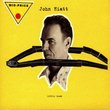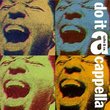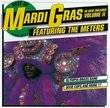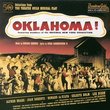| All Artists: Various Artists Title: Carousel Of American Music: The Fabled 24 September 1940 San Francisco Concerts Members Wishing: 0 Total Copies: 0 Label: Music & Arts Program Release Date: 5/20/1997 Genres: Jazz, Special Interest, Pop, Soundtracks, Classic Rock, Broadway & Vocalists Styles: Traditional Jazz & Ragtime, Nostalgia, Easy Listening, Oldies, Vocal Pop, Musicals, Traditional Vocal Pop Number of Discs: 4 SwapaCD Credits: 4 UPC: 017685097126 |
Search - Various Artists :: Carousel Of American Music: The Fabled 24 September 1940 San Francisco Concerts
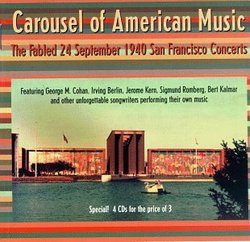 | Various Artists Carousel Of American Music: The Fabled 24 September 1940 San Francisco Concerts Genres: Jazz, Special Interest, Pop, Soundtracks, Classic Rock, Broadway & Vocalists
|
Larger Image |
CD DetailsSimilarly Requested CDs
|
CD ReviewsFor the exacting music historian! Steven R. Martin | League City, TX USA | 03/20/2001 (5 out of 5 stars) "I first visited Treasure Island in April of 2000. It is a shadow of what is was back in 1940, at the end of the Golden Gate International Exposition. At that time, this man-made island was the showcase of countless artists. You can see what the place looked like back then at :http://newdeal.feri.org/library/d_z_ft.htmThis concert is mentioned not only in accounts of the Fair, but also in several music history books. The confluence of great American Composers that occurred on September 24, 1940 hadn't happened before and it hasn't happened since. I particularly enjoyed the narrative offered by Deems Taylor during the afternoon concert (disc one). You get the feeling you are actually there on that sunny Tuesday, watching with the rest of the crowd of 25,000 as the legends of American composition get up to conduct their own works! The liner notes are not as detailed as I would have hoped. I would have liked to have read some recollections of people who actually attended the concert. However, there are some fun items, such as the bells of the Tower of the Sun tolling during one of the songs, that wouldn't be noticeable if not pointed out in the booklet.This recording is a must for the student of composition, as well as any music afficiado who appreciates history. I would suggest listening to the afternoon concert in one sitting. The rest should be taken in smaller bites - the evening concert is three disks long!" Miraculous Discovery Gives Us a Chance to Hear a Once in a C Doug - Haydn Fan | California | 12/10/2008 (5 out of 5 stars) "This four CD set, taken from never used radio acetates, gives us a chance to hear one of the most legendary concerts in American musical history.
In the Fall of 1940 two great Fairs were taking place concurrently on opposite sides of the country: on the West Coast was the Golden Gate International Exposition held in San Francisco on Treasure Island; on the East Coast was the New York World's Fair. To celebrate the 25th anniversary of ASCAP, the American Society of Composers, Authors and Publishers, the orginaztion's President, Gene Buck, arranged with New York Mayor Fiorello La Guardia to present a huge Gala Concert Week during the running of the New York Fair. Capping the concerts were to be two huge once-in-a-lifetime all day concerts featuring practically all the star artists on ASCAP's huge roster, one concert in New York in October at the close of the New York Fair, and one a month earlier at the close of the San Francisco Fair. Initially these special concerts were to be broadcast. Ah, but the organizers hadn't planned on a major brouhaha between the NAB, the National Association of Broadcasters, and ASCAP! By the middle of September NAB met and agreed to boycott ASCAP by airing only music in public domain. The battle heated up even more when the NAB set up rival Broadcast Music, Inc (BMI). Charges of monopoly against ASCAP, already winding through the courts, accelerated. The result was that the previous plans to record and broadcast the concerts were cancelled. Though nothing was recorded at the New York Fair ASCAP concert, by chance the recording personnel at the earlier San Francisco concert, perhaps still unsure over the significance of the NAB boycott announced a mere week before their program, went ahead and recorded the event as planned. However, the ban held, and when ASCAP returned to the airwaves the falling May, the concert recordings had been relegated to history. Flash forward half a century when a set of over-sized transcription 78's of the complete concert turn up serendipitiously on an auction site usually given over to rare opera recodings. David Banks, a native of the Bay Area and historian of American music, immediately recognized their importance and after sparing no expense to win them at auction worked tirelessly in producing this final CD for all to enjoy. His fine notes nicely chronicle the events of the day, and are the basis of this review. The concert was set up in two sections. The first part was an outdoor afternoon one starting at 2:00 PM at the Treasure Island Plaza where over 25,000 people crowded in to hear American classical music played or led by the composers. On the stage were Deems Taylor, Howard Hanson - playing Roy Harris, Richard Hageman, Charles Wakefield Cadman, and William Grant Still, who performed two pieces, including selections from his symphony, "Song of a New Race". Although original reviews of the CD harped on the importance of the classical concert, the second evening concert is far the more adventurous and astonishing historical event. Held indoors at the California Coliseum, a building designed for 12,000, the attraction of so many great names in American music all performing under one roof packed the place past safety regulations to over 15,000 people. Another 10,000 listened outside through loudspeakers. The overflow crowds delayed the originally planned 8:00 start back to part 8:45, and which point the concert finally got started. It is difficult for most people today to realize just how unique was this gathering of American composers. In an age that views American music through the prism of jazz the composer selctions might be thought hopelessly short-sighted and prejudiced. Yet the showcase of talent is remarkable never-the-less, gathering together the very greatest American song-writers of the first forty years of the 20th century. Irving Berlin, George Cohan and Jerome Kern are all on the stage and all perform their music; so is Hoagy Carmichael, Johnny Mercer, and Harold Arlen, who all performed. We hear the composer and lyricist team of Jean Schwartz and William Jerome, who dominated the New York musical stage at the turn of the century with a string of comedy hits; Ernie Burnett at the piano in "My Melancholy Baby"; and Lee Roberts leading the orchestra in "Smiles"; Burt Kalmar and Harry Ruby singing "Three Little Words". Harry Watten is there, who wrote more great songs than I can list; Jimmy McHugh, the author of, "I Can't Give You Anything But Love" - inspired it is said by a remark overheard from a young man talking to his girl outside Tiffany's. There was a long tribute to George Gershwin, who had died just a few years before, and several pieces in memory of Victor Herbert, the founder of ASCAP. Such a list is only a beginning. Judy Garland shows up and sings "Over the Rainbow" (and not so very well, either) and there's only medium applause - the song was still not yet enshrined as it would be! A dying Billy Hill sings with great feeling his hit "The Last Round-Up" - he passed away a mere three months later. We can hear Leo Robin and Ralph Rainger putting over "Love in Bloom"; Albert von Tilzer sitting down at the piano to lead the crowd in "Take Me Out to the Ball Game"; and venerable showman L. Wolfe Gilbert doing a sensational rendition of "Waiting for the Robert E. Lee". Joseph Howard beguiles with an original touch in "I Wonder Whose Kissing Her Now?", then follows up with a real topper and my favorite of the entire concert as he brings down the house in a smashing "Good-bye My Lady Love", complete with exiting cakewalk! Late in the proceedings Peter de Rose plays "Deep Purple" from the piano and goes on into a medley of other hits; right before John Charles Thomas sings a wonderful medley of his own, in such classics as "Old Man River" (with Jerome Kern at the piano) and including the finest performance I ever heard of "Might Lak' a Rose - surpassing the queen herself, Edith Mason! - near the finale we hear W C Handy breaking up the vocal displays with his cornet in a spirited rendition of his immortal "St Louis Blues." The big conclusion offers us the ONLY recordings exant of George M Cohan singing four of his greatest songs, "Give My Regards to Broadway", "Yankee Doodle Boy", "You're a Grand Old Flag, and an encore of "Over There". The list of all these can be found above in the credit listings. I didn't even mention Ann Ronelle ripping breathlessly through her Depression classic, "Whose Afraid of the Big Bad Wolfe?" with all the lyrics, not just the famous refrain; or Mack Gordon's correcting on the fly with disarming humor his piano accompanists' ongoing flubs during a medley. All these numbers have only one drawback, flat, too square for words introductions by Master of Ceremonies Gene Buck, though these are largely something that can be edited out if you wish using the chapters. Mr. Banks carefully sets the times for each of the many performers, so it's easily possibly to have your cake and eat it too! Almost certainly the greatest single evening concert in the history of American popular music, though no doubt rockers and jazz buffs will think otherwise. But I think we should take the opinion of a man who knew music from both sides of the track to sum up the concert: W.C Handy described the concert as follows, "...a program that never before nor can ever again be duplicated this side of kingdom come." " |

 Track Listings (22) - Disc #1
Track Listings (22) - Disc #1
